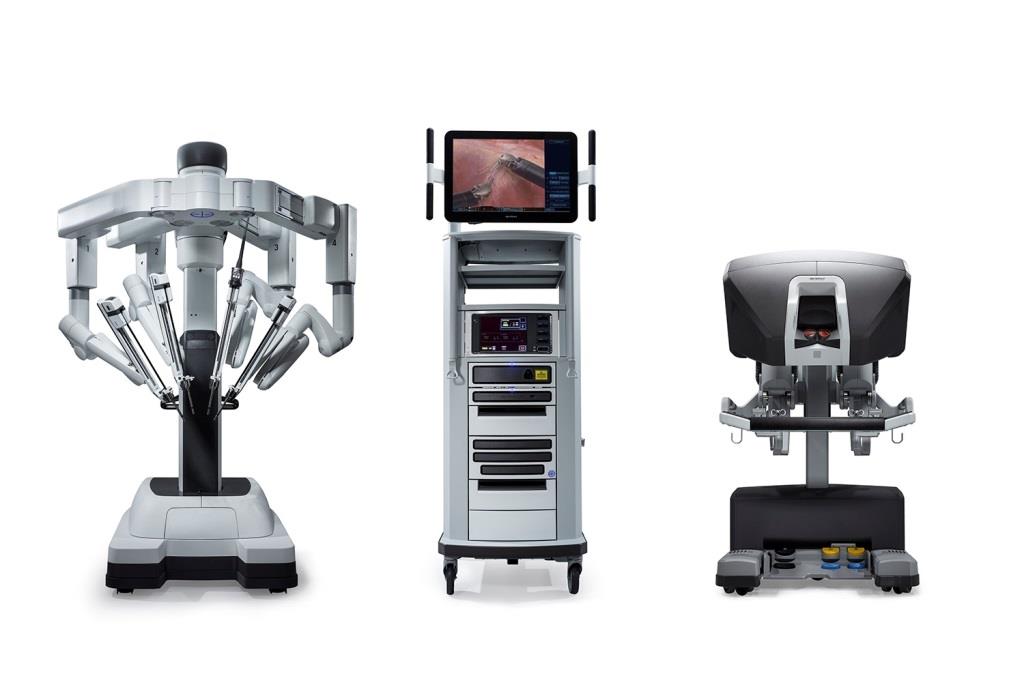Kokilaben Dhirubhai Ambani Hospital launches third da Vinci robotic surgical system – is the only hospital in India with three da Vinci robots

Mumbai, 4th May 2022: Kokilaben Dhirubhai Ambani Hospital, Mumbai announced the launch of its third da Vinci robotic surgical system, making it the first and only hospital in the country with three da Vinci robots. One of the first in the country to introduce robotic surgery with the da Vinci Robotic System in June 2012, the hospital has today completed over 4500 robotic-assisted surgeries across specialities including adult and paediatric urology, gynaecology, ENT and bariatric surgery as well as in cancer surgeries for uro-oncology, gynaecological, head and neck, lung and oesophageal, and colorectal cancers.
Kokilaben Dhirubhai Ambani Hospital (KDAH) has been at the forefront in bringing the cutting edge of medical technology to India and with the third advanced da Vinci Robotic surgical system, has cemented its position as a pioneer in robotic minimally invasive surgery. KDAH is also the first hospital in the country to achieve the significant milestone of completing over 2600 robotic surgeries for treating patients with prostate, kidney and urinary bladder cancer. With dedicated trained specialists in robotic surgery, KDAH has redefined the boundaries of minimally invasive surgery for patients and surgeons, addressing the limitations of conventional open surgery and resolving the shortcomings of traditional laparoscopic methods using the da Vinci robotic surgical platforms.
Dr Yuvaraja T.B, Head, Robotic Surgery and Consultant, Uro-Oncology, KDAH said, “Robotic surgery represents the next era of surgical innovation with many advantages over traditional open surgery. It makes difficult urological surgeries easier and safer for the patient with more precise surgery, less blood loss reducing the need for blood transfusions, less risk of infection, quicker recovery, and a shortened hospital stay. Our vast experience in robotic surgery allows us to treat patients where traditional surgery is not an option and also in complex cases by innovating novel techniques that let us operate in very small spaces with great precision. It is a matter of great pride that our innovative work has been accepted and published in many national and international medical journals.”
Today, robotic surgery is the method of choice in minimally invasive surgery and has replaced conventional laparoscopy and traditional open surgery in many fields. Robotic surgery has also proven to be highly beneficial to patients who cannot go in for open surgery due to various reasons and is commonly used for complex surgeries.
Robotic surgery is not an automated surgical system but is remote-controlled by a human surgeon. This makes it very safe as the surgeon is completely in control at all times. Using a minimally-invasive approach, robotic surgery is performed through small incisions as against conventional open surgery that requires big incisions. The da Vinci Robotic system offers extreme precision as compared to handheld tools, particularly in hard-to-access parts of the body with a computer providing a digital interface between the surgeon’s hands and the surgical instruments. This increases the surgeon’s hand and wrist flexibility permitting a wide range of fine movements while providing improved visualisation with a magnified hi-definition three-dimensional image.
Dr Yuvaraja T.B added, “We have always been aware that the outcome of robotic surgery is dependent on the surgeon’s skills and hence have also focused on training our surgeons in robotic surgery. The robotic surgery learning curve is shorter compared to laparoscopic surgery. At Kokilaben Hospital, we offer a Fellowship program and are training two urological surgeons every year in robotic surgery and use of the da Vinci System robotic surgical platform.”
Dr Santosh Shetty, Executive Director and CEO, KDAH said, “We realized the potential of robotic surgery in helping patients at an early stage and were among the first to bring the high-end da Vinci Robotic systems to our hospital. We also ensured that our surgeons are specially trained in diagnosing and treating various conditions using advanced robotic technologies. We are glad that our foresight has led to thousands of patients being benefitted from robotic surgery. A factor that has contributed to the growing number of robotic surgeries is that these are cost-effective with a nominal price differential over conventional surgery. Health insurance has also recognized the advantages of robotic surgeries and now covers these procedures, which is a boon to patients.”
The da Vinci Robotic Surgical System represents the latest in surgical and robotic technologies. Named after Leonardo da Vinci, the 15th-century inventor and painter who invented the first robot, the da Vinci system was developed using technology pioneered by NASA and the Scripps Research Institute and approved for use in surgery by the US FDA in the year 2000. The technologically advanced and refined da Vinci Surgical System has a camera with a three-dimensional lens system that magnifies the operating area 10 to 15 times improving visibility for the surgeon and allowing small precise techniques. Today, there are more than 6,500 da Vinci surgical systems installed in 67 countries, and more than 55,000 surgeons worldwide have trained on the use of da Vinci systems. Over 10 million procedures have been performed globally with da Vinci systems.





